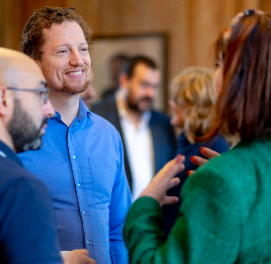In our previous articles, we explored practical approaches to navigate diversity and how to manage virtual cross-cultural teams. Today, we’re going to tackle how internal drivers play out in micro-decisions and macro leadership systems. If we’re going to tackle inclusivity thoroughly – and the cost of just ticking a box is too high – we’re going to need to go deep.
The influences that go unnoticed
Although we may name inclusivity as one of our values, the real crunch comes at the level of our core internal drivers. It is here where unconscious bias plays out – and our default patterns of behaviour are entrenched. Unless we address this psychological core, the decisions we make will be like compass bearings without a ship to take us there. And the tide of collective behaviour will cause us to drift away from inclusion – even we set our direction differently.
“Businesses are already trying to address some common biases,” says Valeria Cardillo Piccolino, a TPC Associate Partner. “Such as the stereotype that women are more emotional than men – and perhaps not suitable for the boardroom. These biases are talked about and are beginning to be addressed. But other unconscious biases escape unnoticed by businesses – particularly around introversion and extroversion.”
Our cultural paradigms
Our interculturality affects how many internal drivers go unnoticed. When we only examine our biases with people of our own background, we miss the assumptions that are made invisible by our culture.
Catherine Bardwell, an Associate Partner at TPC, recalls a time that she visited Japan on behalf of the CEO of a PWC client. She pitched to a room full of leaders and at the end she asked, “Are you with me?” She saw everyone nodding and went away satisfied. But upon her return to the UK, she discovered an email from the same people saying they completely disagreed with what she had said. “In Japan it is disrespectful to disagree with someone senior,” says Catherine, “I misread their respect as heartfelt agreement.”
“Childhood lessons… imbued me with the assumption that being explicit is simply good communication,” says Erin Meyer, in The Culture Map. A Japanese HR executive Kenji Takaki, later informed her that, “In Japan, we implicitly learn, as we are growing up, to communicate between the lines and to listen between the lines when others are speaking. Communicating messages without saying them directly is a deep part of our culture, so deep that we do it without even realising it… In Japan if you can’t read the air, you are not a good listener.”
The exclusions within yourself
Unconscious assumption influences our decisions more than we would like to admit. But this can partly be mitigated by addressing the unconscious assumptions we have about ourselves.
In our last article we explored how the process communication tool can be used to start leaders off on the path to inclusivity. It highlights six characteristics that are present across cultures but are valued differently in terms of appropriateness by each culture as revealed in the Global Disc model.
Part of becoming more inclusive has to involve becoming more inclusive within yourself. If you have no tolerance for your own imaginings, you will struggle to give space to those who thrive on having time to dream and envision possibilities. Likewise, if you are afraid to concede on your opinions for fear of losing control, you might not notice the strengths of someone from a compliant people-orientated culture. How inclusive are you with different energies within yourself? Others will thank you for the peace you make here.
Mitigating bias systemically
“Start by accepting that our minds are stubborn beasts,” says Iris Bohnet, author of What Works. “It’s very hard to eliminate our biases, but we can design organisations to make it easier for our biased minds to get things right.”
This is what makes the shift from diversity to diversity and inclusion. “Real inclusion is not about quotas,” says Valeria Cardillo Piccolino. “It’s not about employing sixty deaf people. You need to go further – taking into account their grammar and syntax, creating an environment where they can express their talents.”
“Real inclusion is understanding a person’s specific ways of working, reading and elaborating on a document,” Valeria says. “It’s important to be curious on an attitude level. To ask ‘what specific support do you need to be at your best?’”
Curiosity is the starting point. It moves us from merely possessing an ethical value to creating concrete solutions. The kind of solutions that are felt in a meaningful way by those on our teams.
Inclusion starts with listening and moves towards systemic change. Senior leadership will no longer seem like a pipe dream to those in minority groups. Differently-abled people will be supported to bring innovation. And everyone will feel heard by the members of their team. This is the direction we said we were heading in – that we knew we wanted to travel to. And if we are prepared to address the internal drivers that affect our decision-making, we’ll no longer just be wishing for a wind to take us there. We’ll be the engine that makes the ship move.
Want more insight on how to move forward? Get in touch with us to find out how we can help.





